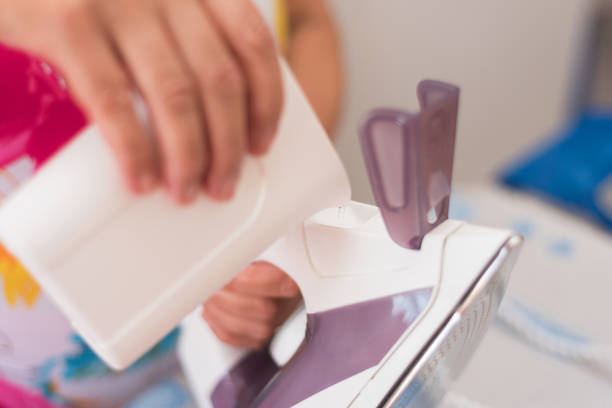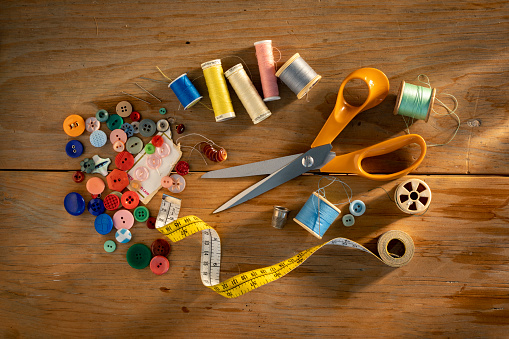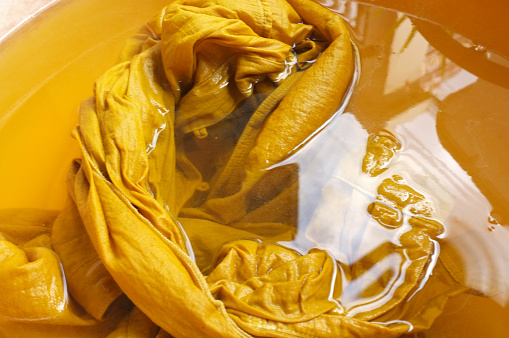Mordanting fabric is a process that can be done at home to prepare fabric for dyeing. Mordanting helps the dye adhere better to the fabric, and it also helps to set the colour. In this article, we will discuss the basics of mordanting fabric and provide some tips on how to get the best results.
Mordanting fabric is simple, and arguably the most important step when using natural dyes. There are a few things to keep in mind. First, you need to choose the right mordant. Then use it in the right quantities and the correct method for your chosen fabric, this may sound a little complex but everything is explained in this article.
What Is Mordant? And Why Use It?

To put it simply mordant is a substance that helps the dye to adhere to the fabric. Mordant can be either natural or chemical. The most common mordants are alum, copper sulphate, and chrome. Mordanting fabric is not always necessary, but it does help to set the colour of the dye and make it more colourful.
If you want more information on what mordant is you can find it here: What Is Mordant
When Do I Need To Use Mordant?
It is best to use mordant when working with natural dyes as this will allow you to achieve a better result something closer to that achieved with synthetic dyes. Mordant helps to set the colour of the fabric so that it is less likely to fade over time.
When using synthetic dyes a lot of the time there is no need to mordant as you will already achieve a strong colour from the dye and some have a mordant mixed in with them.
How To Choose The Right Mordant For Your Fabric?

The first step in the mordanting fabric is to choose the right mordant. There are many different mordants available, and each one will produce different results. You need to take into account the type of fabric you are mordanting and what effect you want to achieve. Mordants can be applied in several different ways, and each method will produce varying results.
With natural fabrics like linen, cotton, bamboo, hemp and fibre blends mordanting is easy, follow the steps in the beginner’s guide below. Our pick for the best mordant for natural fibres is Alum as it is easy to use and relatively safe. It’s also cheap and easy to find, you can get alum for mordanting fabric here.
A Beginners Guide To Mordanting Fabric At Home
Without further ado here’s the simplest method to mordant your fabric at home! In 4 easy steps, and is the one we always use!
What You Will Need:
- A container big enough to fit your fabric and water.
- The fabric of choice.
- Alum. (mordant)
- Warm Water.
- Gloves.
- A metal stirring spoon.
- Metric Weighing Scales.
Step 1. Weighing And Measuring

Weigh your dry fabric and calculate 15% of that weight, this is the amount of alum you will need.
For example, our fabric weighs 1000g so we will need 150g of mordant (Alum) For this project.
After weighing your fabric give it a quick wash, using no detergents or soap.
Whilst your fabric is in the washing machine, weigh out the required amount of alum so you are ready for the next step.
Step 2. Preparation
Prepare your clean container by adding enough warm water so your fabric can move around freely and can be stirred without spilling. Add your alum and stir until it is fully dissolved.
Your mordant bath is now prepared and ready for your fabric.
Step 3. The Mordanting Process

Take your freshly washed fabric and place it into your mordant bath, stir it around to remove air bubbles and ensure it is properly soaked. leave it for 30 to 50 minutes stirring around every 15 minutes to ensure an even soak.
Step 4. Rinse And Dry

Once your fabric has been soaking for at least 30 minutes, you can remove it from the mordant bath. Empty the mordant bath and fill with clean water add your fabric and stir for a couple of minutes to remove any excess mordant, that hasn’t bound to the fibres.
Once completed simply hang your fabric to dry, and that’s it you have successfully mordanted your fabric ready for the dyeing process!
Find out more about the dyeing process here: Fabric Dyeing for Beginners, Everything You Need to Know
Tips For Mordanting Fabric
Don’t let your fabric soak for too long.

There is no way to save over-mordanted fabrics, as most mordants are acidic and bind permanently. We recommend no longer than 50 minutes for the best results, with the only exception being yarn as with this being woven it takes longer to soak.
Always use weighing scales.
There are many mordant recipes out there that don’t use scales, and this is a lot less accurate. Using cups or tablespoons to measure mordant will work some of the time, but our issue with these mordant recipes is you can’t ensure consistent results. You will be using slightly different amounts of mordant every time.
Take Safety Seriously.

Some mordants are more acidic than others and can irritate if they get into contact with the skin. We recommend you use your judgement when it comes to safety precautions it would be a good idea to always use long gloves, an apron and goggles. And thoroughly research the compound you are using to mordant your project before you start!
Conclusion
Mordanting fabric sounds like a complex activity but we hope this guide has shown you it’s quite simple. Mordanting is the key to getting vibrant and long-lasting colours with natural dyes, so it’s worth taking the time to do it right!
If you found this guide helpful you should check out our other articles on dying fabric! They can all be found on the fabric crafts section of our website.


